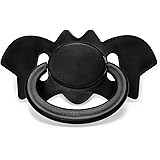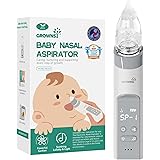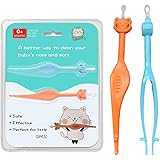Welcome to the incredible journey of parenthood! The first few days with a newborn are often a whirlwind of emotions, exhaustion, and countless questions. The short video above provides some quick, invaluable pointers, but understanding the depth behind these tips is crucial for any new parent navigating this exciting yet challenging period. Mastering fundamental newborn care during your baby’s first three days lays the groundwork for a confident parenting experience.
Bringing a baby home means entering a new world of responsibilities, and it’s perfectly normal to feel overwhelmed. Your newborn is transitioning from the constant warmth and security of the womb to an entirely new environment, which requires immense adjustment. By focusing on a few key areas, you can ensure a smoother transition for both you and your little one, fostering a strong bond from the very beginning.
Mastering the Swaddle for Your Newborn’s Comfort
One of the most effective techniques highlighted in the video is learning a good swaddling technique. Swaddling isn’t just about wrapping your baby; it’s about providing a sense of security and comfort, mimicking the snug feeling of the womb. This gentle restraint helps prevent the startle reflex, also known as the Moro reflex, which can often wake babies prematurely from their sleep.
To execute a proper swaddle, start with a square, breathable blanket. Lay the blanket flat in a diamond shape, folding down the top corner slightly. Place your baby on their back with their neck at the fold. First, take one side of the blanket, pull it across your baby’s body, and tuck it snugly under the opposite side. Next, fold the bottom corner up over their feet, ensuring there’s enough room for their hips to move freely to prevent hip dysplasia. Finally, bring the remaining side across your baby’s front and tuck it securely. Imagine if your baby could communicate the comfort they feel when securely swaddled, mimicking the embrace they knew in the womb—it’s truly a soothing experience for them. Always remember that swaddling should stop once your baby shows signs of rolling over, typically around two to four months of age, as it can become a safety hazard.
Gentle Handling: Prioritizing Your Baby’s Safety and Development
The second critical piece of advice from the video is to avoid shaking or rocking your baby too vigorously. A newborn’s brain is incredibly delicate and still developing, making it highly vulnerable to injury. Shaking a baby, even for a few seconds, can lead to Shaken Baby Syndrome (SBS), causing severe and often irreversible brain damage, developmental delays, or even death. It’s a sobering thought, but one that underscores the absolute necessity of gentle handling.
Instead of vigorous movements, opt for safe and soothing techniques. Gentle swaying, rocking, or patting can provide comfort without risk. Always support your baby’s head and neck, especially during lifts and movements, as their neck muscles are not yet strong enough to hold their head upright. Envision your newborn’s delicate neck, still gaining strength, requiring constant, loving support during every lift and cuddle. Skin-to-skin contact, often referred to as “kangaroo care,” is another powerful and gentle method to calm your baby, regulate their temperature, and promote bonding during these early days.
Creating a Calm Environment: Managing External Stimuli
The video briefly touches upon keeping external stimuli managed, a vital aspect of newborn care. Babies spend nine months in a relatively quiet and dark environment, so the outside world can be overwhelming. Overstimulation from bright lights, loud noises, or too many visitors can make your newborn fussy, disrupt their sleep patterns, and hinder their ability to adapt to their new surroundings. It’s essential to create a peaceful sanctuary for them.
To achieve this, consider maintaining dim lighting in the nursery, especially during feeding and changing times. Keep voices soft and avoid abrupt, loud noises. While it’s wonderful for family and friends to meet the new arrival, limit the number of visitors and keep interactions calm and brief during these first few days. A consistent, quiet routine, even in its infancy, can help your baby distinguish between day and night. Consider a peaceful, dimly lit room where your baby can slowly adjust to the outside world, free from jarring noises or bright lights, allowing them to feel safe and secure as they navigate their new reality.
Beyond the Basics: Essential Newborn Care in the First Three Days
Nourishing Your Little One: Feeding Fundamentals
Feeding is a primary concern for new parents. Whether you choose breastfeeding or formula feeding, understanding your baby’s cues is paramount. Newborns typically feed every 2-3 hours, or 8-12 times in a 24-hour period. For breastfed babies, colostrum, the nutrient-rich “first milk,” is invaluable for immunity and gut health. Look for signs of hunger like rooting, lip smacking, or bringing hands to mouth, rather than waiting for crying, which is a late sign of hunger. Adequate feeding is often confirmed by observing regular wet and dirty diapers; aim for at least one wet diaper per day of life initially, increasing to 5-6 by day five, and multiple dirty diapers.
Safe Sleep Practices for Peaceful Nights
Sleep, or lack thereof, becomes a central theme for new parents. Ensuring your baby sleeps safely is crucial for preventing Sudden Infant Death Syndrome (SIDS). Always place your baby on their back to sleep, on a firm sleep surface without any loose bedding, bumpers, or soft toys. The crib should be free of anything other than a fitted sheet. Room-sharing with your baby, but not bed-sharing, is recommended for the first six months to a year. Understanding that newborns have erratic sleep patterns, often sleeping 16-17 hours a day in short bursts, can help manage parental expectations and reduce anxiety about their sleep schedule.
Diaper Duty and Umbilical Cord Care
You’ll be changing a lot of diapers! Expect frequent changes, especially in the first three days, as your baby passes meconium – the dark, tar-like first stool. Keep the umbilical cord stump clean and dry, folding the diaper down to expose it to air. The stump will typically fall off within 1-3 weeks. Report any signs of redness, swelling, or foul odor around the cord to your pediatrician immediately, as these could indicate infection. Frequent diaper changes also prevent diaper rash and keep your baby comfortable.
Bonding and Communication: Building Early Connections
The first three days offer precious opportunities for bonding. Skin-to-skin contact, gentle caresses, talking softly, and making eye contact are powerful ways to connect with your newborn. Pay attention to their unique cries and body language – your baby communicates needs through these cues. Responsive parenting, which means attending to these needs promptly, helps build trust and a secure attachment. These early interactions are not just sweet moments; they are foundational to your baby’s emotional and neurological development.
Prioritizing Parental Well-being
Amidst all the focus on your newborn, remember to care for yourself. The postpartum period can be incredibly demanding physically and emotionally. Accept help from family and friends, whether for meals, chores, or simply to hold the baby while you rest. Prioritize sleep whenever possible, even if it means napping when your baby naps. Maintaining open communication with your partner and seeking support when needed are vital for navigating the challenges of baby’s first three days. The journey of new parenthood is truly a marathon, not a sprint.











